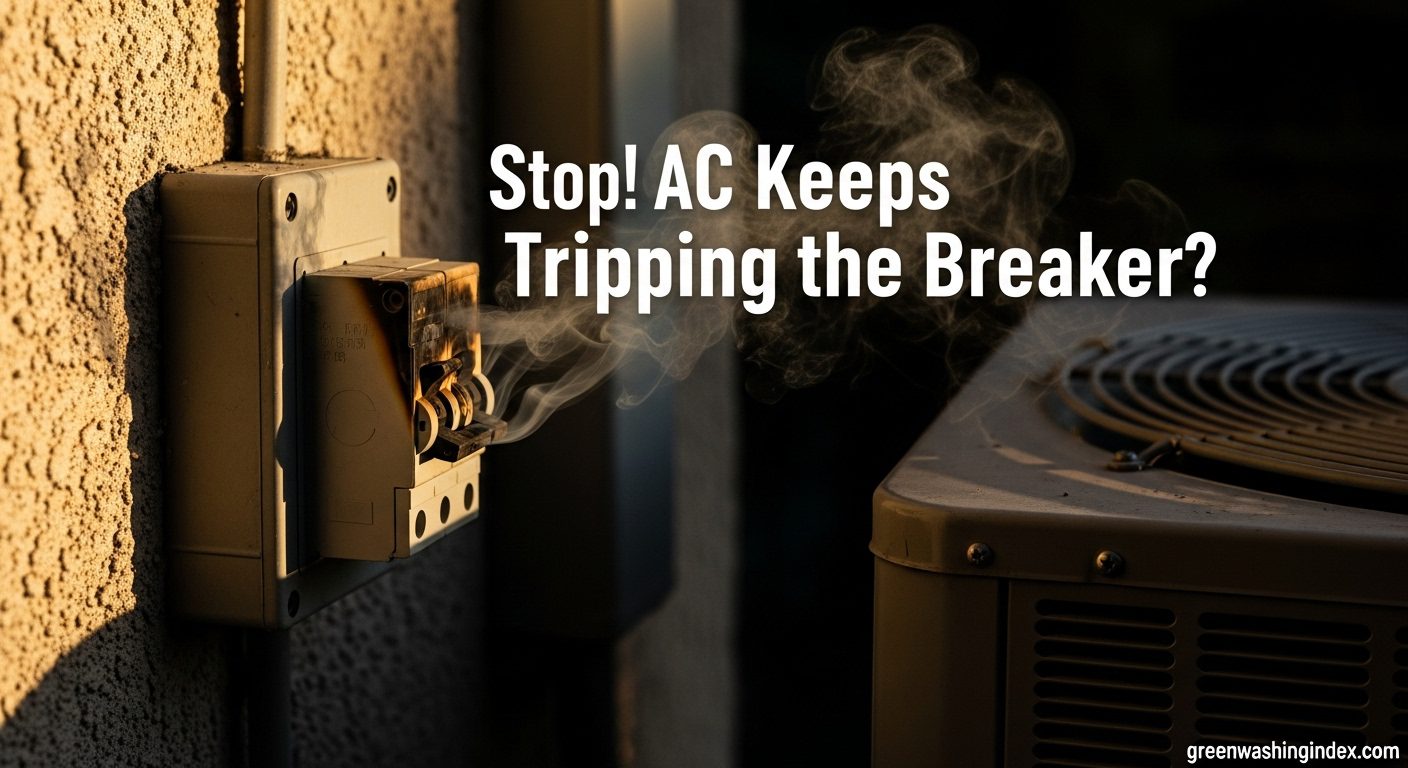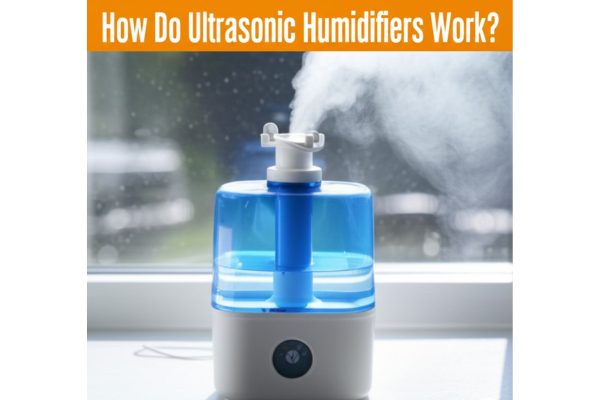

If you’ve ever wondered about the quiet, cool mist coming from that sleek device on your nightstand, you’re about to discover some fascinating technology. Ultrasonic humidifiers use high-frequency sound waves – far beyond what humans can hear – to turn water into a fine mist without any heat or visible moving parts.
I spent considerable time researching the physics behind these devices, and what I found is genuinely impressive. These machines operate at frequencies around 1.7 million vibrations per second, creating microscopic water droplets through a process that seems almost magical but is pure science.
Today’s ultrasonic humidifiers represent a significant advancement in home comfort technology. Unlike their predecessors that relied on boiling water or fan-driven evaporation, these devices use piezoelectric transducers – the same technology found in medical ultrasound equipment – to atomize water at room temperature.
An ultrasonic humidifier is a device that uses ultrasonic vibrations to create water droplets that silently exit the humidifier in the form of cool fog. The technology operates at frequencies typically between 1 and 2 megahertz (MHz), well above the 20 kilohertz upper limit of human hearing.
What sets ultrasonic humidifiers apart from other types is their use of a piezoelectric transducer – a ceramic disc that vibrates when electrical current passes through it. This transducer sits at the bottom of the water reservoir and creates high-frequency mechanical oscillations that break water into tiny droplets averaging 1-5 microns in diameter.
The EPA recognizes ultrasonic humidifiers as one of the most energy-efficient humidification methods available for home use. They consume about 20-30 watts of power compared to 300-500 watts for warm mist vaporizers, making them cost-effective for continuous operation.
These devices have become increasingly popular in homes, offices, and even some healthcare settings (with proper precautions). Their silent operation, energy efficiency, and ability to produce cool mist without heating elements make them ideal for bedrooms, nurseries, and spaces where quiet operation is essential.
The core principle behind ultrasonic humidification involves converting electrical energy into mechanical vibrations at ultrasonic frequencies. When you turn on an ultrasonic humidifier, electricity flows to the piezoelectric transducer, causing it to expand and contract rapidly – typically at 1.7 MHz or 1.7 million times per second.
Piezoelectric materials have a unique property: they generate an electric charge when mechanically stressed and conversely change shape when an electric field is applied. In ultrasonic humidifiers, the transducer uses lead zirconate titanate (PZT) or similar ceramic materials that exhibit strong piezoelectric properties.
When alternating current at the right frequency hits the transducer, it creates mechanical vibrations that transfer directly to the water above it. These vibrations are so rapid and intense that they overcome the surface tension of water, creating a phenomenon called cavitation.
Cavitation occurs when the pressure variations in the water become so extreme that tiny vacuum bubbles form and immediately collapse. This process happens millions of times per second at the water’s surface, literally tearing water molecules away from the bulk liquid and launching them into the air as microscopic droplets.
The ultrasonic waves create a water column effect where you can actually see the water being pushed upward at the point directly above the transducer. This visible disturbance is where the most intense cavitation occurs, producing the majority of the mist.
According to technical specifications from leading manufacturers, the average droplet size produced ranges from 1 to 5 microns. For comparison, a human hair is about 70 microns in diameter, making these droplets incredibly fine and able to remain suspended in air for extended periods.
Understanding how each component works together helps explain why ultrasonic humidifiers are so effective and reliable. Let me walk you through the essential parts that make this technology possible.
The transducer is undoubtedly the heart of an ultrasonic humidifier. This ceramic disc, typically 20-40mm in diameter and 2-3mm thick, sits sealed at the bottom of the water chamber. It’s connected to an oscillator circuit that generates the precise frequency needed for optimal mist production.
The transducer’s surface is usually covered with a thin layer of silver or nickel electrode material that ensures even electrical distribution across the ceramic. This coating is crucial for maintaining consistent vibration patterns and preventing hot spots that could damage the transducer.
The water tank design in ultrasonic humidifiers serves multiple purposes beyond simple storage. Most units feature a removable tank that sits inverted over the transducer chamber, using gravity and atmospheric pressure to maintain a consistent water level.
A float valve or similar mechanism ensures the transducer always has the optimal water depth above it – typically 30-50mm. Too much water dampens the ultrasonic waves, while too little can cause the transducer to overheat and fail.
Modern ultrasonic humidifiers include sophisticated control circuits that monitor humidity levels, adjust mist output, and protect the transducer from damage. The oscillator circuit must maintain precise frequency control, as even small variations can significantly reduce mist production efficiency.
Many units now include automatic shut-off features that activate when the water runs out, preventing transducer burnout. Some advanced models even adjust the ultrasonic frequency slightly to prevent mineral buildup on the transducer surface.
After researching extensively and consulting EPA guidelines, I’ve compiled the most significant benefits and drawbacks of ultrasonic humidifier technology.
Energy efficiency stands out as the primary advantage. Ultrasonic humidifiers use approximately 90% less energy than warm mist vaporizers since they don’t need to heat water to boiling. A typical unit consumes just 20-30 watts – less than most LED light bulbs.
The silent operation makes these devices perfect for bedrooms and offices. Without motors, fans, or boiling water, the only sound you might hear is occasional water dripping back into the reservoir.
Safety is another significant benefit. With no heating elements, there’s no risk of burns from hot water or steam, making ultrasonic humidifiers ideal for children’s rooms and around pets.
The white dust issue remains the most common complaint about ultrasonic humidifiers. According to EPA documentation, these devices disperse any minerals present in the water into the air as fine particles. Using tap water with high mineral content creates a white, powdery residue on nearby surfaces.
The CDC warns that ultrasonic humidifiers can potentially disperse microorganisms into the air if not properly maintained. Unlike boiling-water humidifiers that kill most bacteria and molds, ultrasonic units release whatever is in the water tank directly into your breathing space.
While researching non-toxic humidifiers, I discovered that using distilled or demineralized water eliminates most of these concerns, though this adds to operating costs.
To truly understand ultrasonic technology’s place in the humidifier market, we need to compare it with other common types.
Evaporative Humidifiers: These use a fan to blow air through a wet wick filter. While self-regulating (they naturally slow down as humidity rises), they’re noisier than ultrasonic models and require regular filter replacements. They don’t produce white dust but can harbor bacteria in the filter if not maintained properly.
Steam Vaporizers: These boil water to create steam, then cool it slightly before releasing. They’re excellent at killing bacteria and don’t produce mineral dust, but they use significantly more energy and pose burn risks. The boiling sound can also be disruptive in quiet environments.
Impeller Humidifiers: Similar to ultrasonic in producing cool mist, these use a rotating disc to fling water at a diffuser. They’re quiet and energy-efficient but less common in modern designs and can still produce white dust with hard water.
The EPA provides specific guidelines for safe ultrasonic humidifier use that everyone should follow. First and foremost, use distilled or demineralized water whenever possible to prevent mineral dispersal and reduce the risk of breathing in dissolved impurities.
Clean your humidifier every three days when in use. Empty the tank, rinse with hot water, and scrub away any film or scale using a soft brush. The CDC recommends using a 3% hydrogen peroxide solution or diluted bleach (1 teaspoon per gallon of water) for disinfection, followed by thorough rinsing.
Proper humidifier placement matters for both effectiveness and safety. Position the unit at least 2 feet away from walls and 3 feet from your bed to prevent excess moisture accumulation on surfaces and to ensure proper mist dispersion.
Monitor indoor humidity levels and keep them between 30-50%. Higher levels can promote dust mite and mold growth, potentially worsening allergies and respiratory issues rather than helping them.
Q: Do ultrasonic humidifiers need filters?
A: No, ultrasonic humidifiers don’t require filters since they don’t pull air through the unit. This eliminates filter replacement costs but means they can’t remove impurities from the water before creating mist.
Q: Why does my ultrasonic humidifier leave white dust everywhere?
A: The white dust consists of minerals from your tap water that the ultrasonic process disperses into the air along with water droplets. These minerals then settle on surfaces as the water evaporates. Using distilled water completely eliminates this issue.
Q: How often should I clean my ultrasonic humidifier?
A: The EPA recommends cleaning every third day of use. Empty the tank completely, scrub with a soft brush, disinfect with hydrogen peroxide or diluted bleach solution, rinse thoroughly, and dry before refilling.
Q: Can ultrasonic humidifiers make you sick?
A: If not properly maintained, any humidifier can harbor and disperse bacteria or mold. Ultrasonic units are particularly concerning because they don’t heat water to kill microorganisms. Regular cleaning and using distilled water significantly reduces health risks.
Q: How long do ultrasonic humidifier transducers last?
A: With proper maintenance and water quality, transducers typically last 3,000-5,000 hours of operation, roughly 1-2 years of regular use. Using distilled water and regular cleaning extends their lifespan significantly.
Ultrasonic humidifier technology represents an elegant solution to indoor humidity control, using high-frequency vibrations to create cool mist without heat or excessive energy consumption. The piezoelectric transducer at the heart of these devices converts electrical energy into mechanical vibrations at 1.7 million cycles per second, literally shaking water apart at the molecular level.
While the technology offers significant advantages in energy efficiency, quiet operation, and safety, it requires responsible use. Following EPA guidelines for water quality and maintenance ensures you get the benefits without the potential drawbacks of mineral dust or microorganism dispersal.
As we continue to spend more time indoors and seek ways to improve our living environments, understanding the technology behind our comfort devices becomes increasingly valuable. Ultrasonic humidifiers, when used correctly, provide an efficient and effective solution for maintaining optimal indoor humidity levels year-round.

Don't let aphids, slugs, and caterpillars ruin another plant. Take back control with simple, natural methods that actually work.